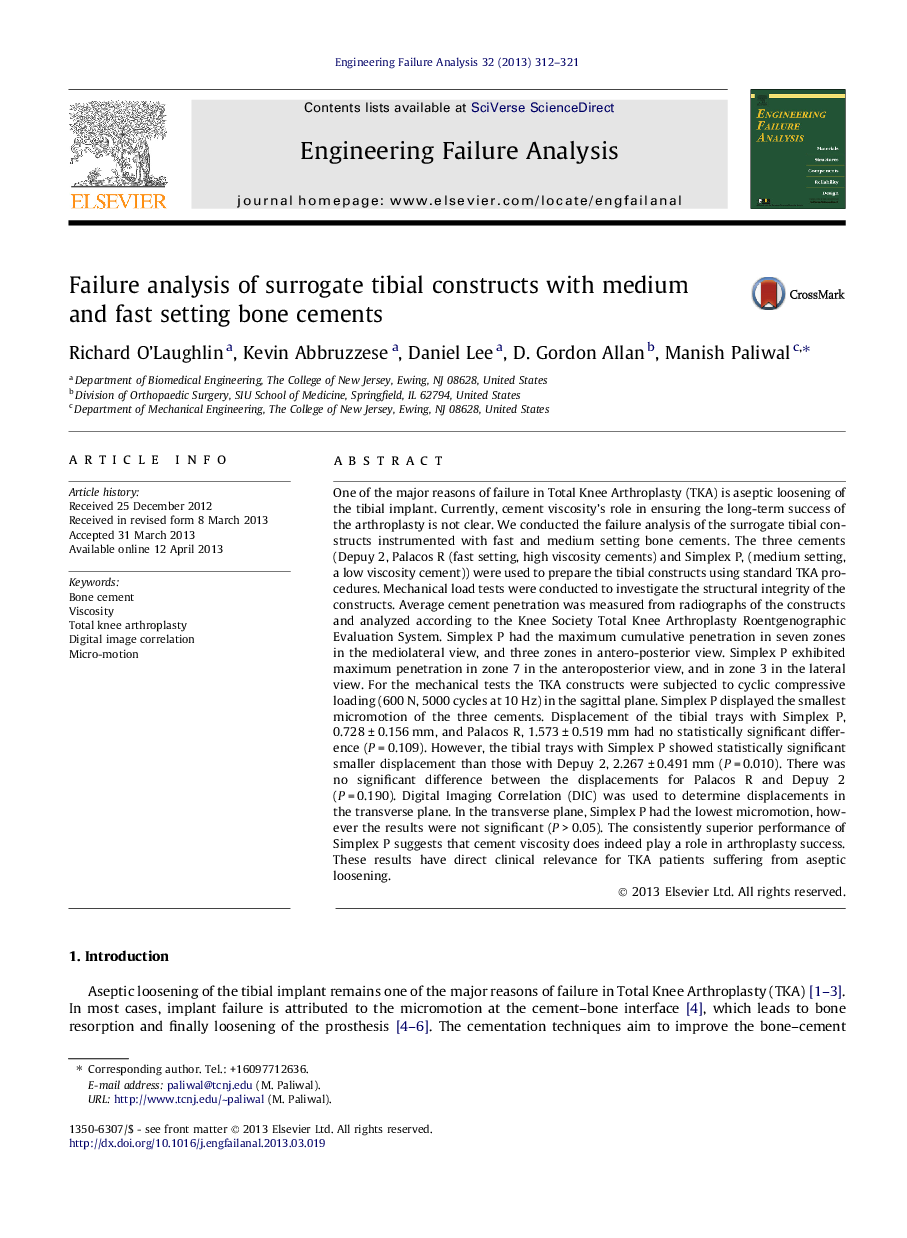| Article ID | Journal | Published Year | Pages | File Type |
|---|---|---|---|---|
| 774084 | Engineering Failure Analysis | 2013 | 10 Pages |
•Surrogate tibial constructs were tested by subjecting them to cyclic loading.•Fast and medium setting bone cements were used to instrument tibial constructs.•Tibial plate micromotion, and cement penetration were among the parameters compared.•Medium setting cement showed the smallest micromotion and maximum penetration.•Cement viscosity may be playing a critical role in arthroplasty success.
One of the major reasons of failure in Total Knee Arthroplasty (TKA) is aseptic loosening of the tibial implant. Currently, cement viscosity’s role in ensuring the long-term success of the arthroplasty is not clear. We conducted the failure analysis of the surrogate tibial constructs instrumented with fast and medium setting bone cements. The three cements (Depuy 2, Palacos R (fast setting, high viscosity cements) and Simplex P, (medium setting, a low viscosity cement)) were used to prepare the tibial constructs using standard TKA procedures. Mechanical load tests were conducted to investigate the structural integrity of the constructs. Average cement penetration was measured from radiographs of the constructs and analyzed according to the Knee Society Total Knee Arthroplasty Roentgenographic Evaluation System. Simplex P had the maximum cumulative penetration in seven zones in the mediolateral view, and three zones in antero-posterior view. Simplex P exhibited maximum penetration in zone 7 in the anteroposterior view, and in zone 3 in the lateral view. For the mechanical tests the TKA constructs were subjected to cyclic compressive loading (600 N, 5000 cycles at 10 Hz) in the sagittal plane. Simplex P displayed the smallest micromotion of the three cements. Displacement of the tibial trays with Simplex P, 0.728 ± 0.156 mm, and Palacos R, 1.573 ± 0.519 mm had no statistically significant difference (P = 0.109). However, the tibial trays with Simplex P showed statistically significant smaller displacement than those with Depuy 2, 2.267 ± 0.491 mm (P = 0.010). There was no significant difference between the displacements for Palacos R and Depuy 2 (P = 0.190). Digital Imaging Correlation (DIC) was used to determine displacements in the transverse plane. In the transverse plane, Simplex P had the lowest micromotion, however the results were not significant (P > 0.05). The consistently superior performance of Simplex P suggests that cement viscosity does indeed play a role in arthroplasty success. These results have direct clinical relevance for TKA patients suffering from aseptic loosening.
